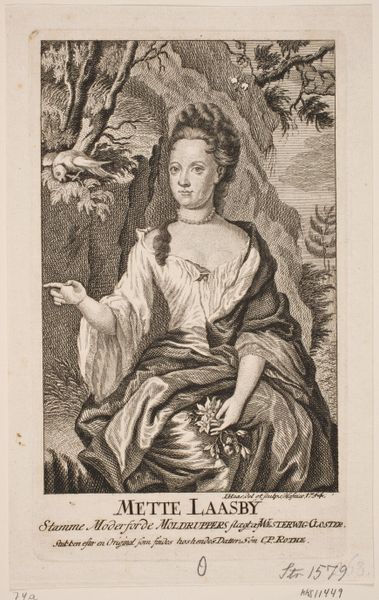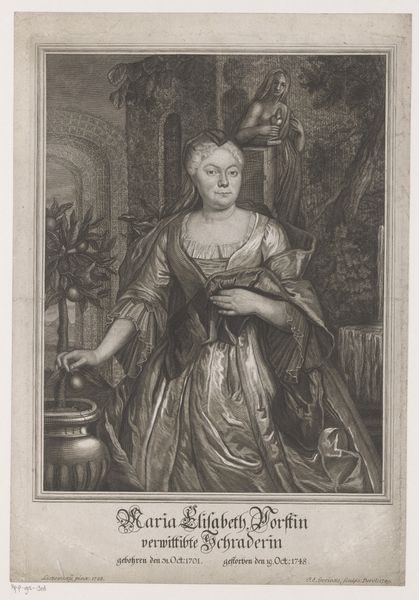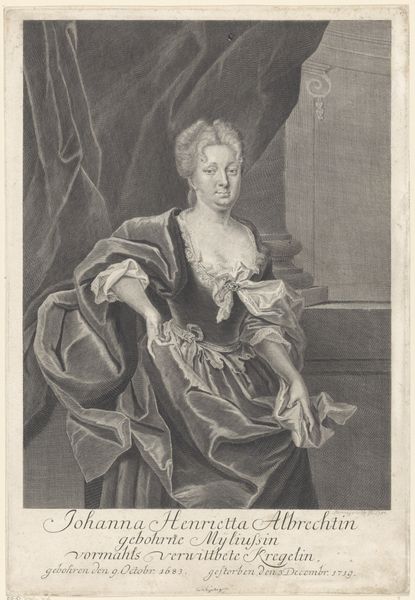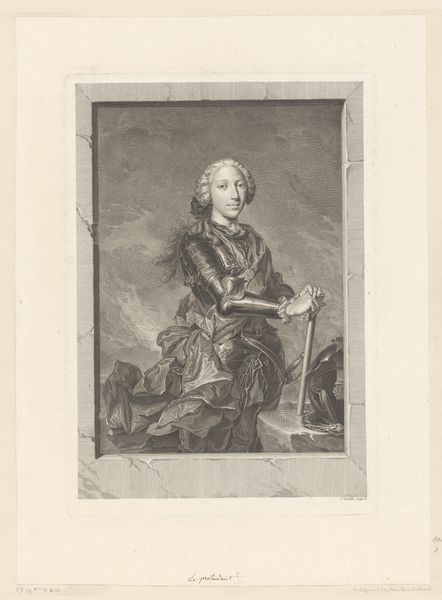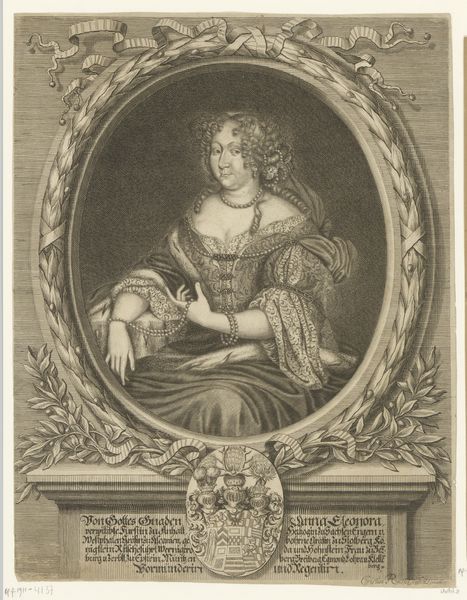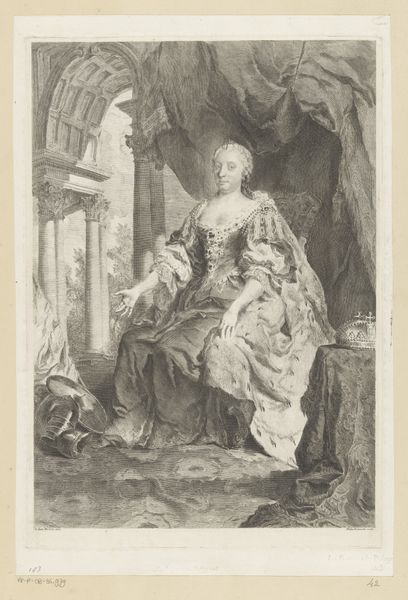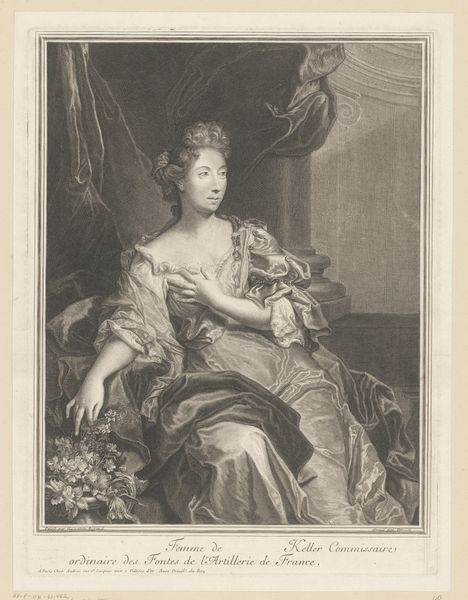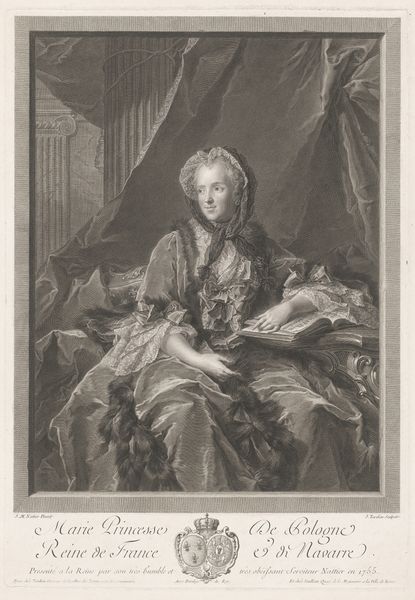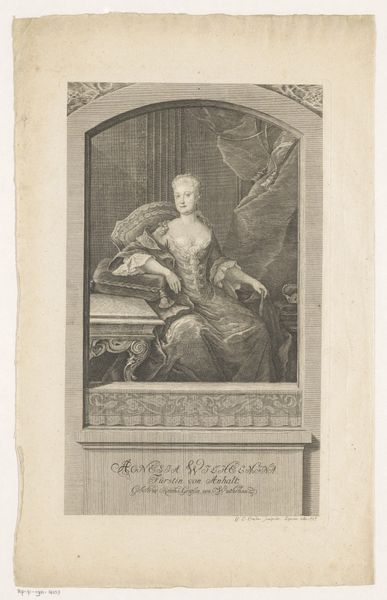
print, engraving
#
portrait
#
baroque
# print
#
charcoal drawing
#
charcoal art
#
engraving
Dimensions: height 401 mm, width 280 mm
Copyright: Rijks Museum: Open Domain
Editor: This is a 1737 print by Georg Martin Preissler, a portrait of Johanna Susanna Jentzsch. The detail achieved in the engraving, especially in the clothing and textures, is impressive, though it feels quite formal. What are your thoughts, looking at this from a historical perspective? Curator: Well, firstly, it's crucial to acknowledge the context: this portrait serves not just as a likeness but as a marker of social status and historical memory. Notice the details: the sitter's rich attire, the setting, and the inscription below. What do these elements suggest about the societal role of portraiture in the 18th century? Editor: It definitely feels like it’s about portraying wealth and position. The ornate clock, the fabric, everything screams status, as you pointed out, and perhaps remembrance after passing. Is that kind of memorialisation the primary purpose for these types of Baroque era prints? Curator: It’s certainly one aspect, but consider also the economics and social dynamics at play. Who commissioned such portraits, and who had access to them? This print would circulate among a specific social circle, reinforcing ideas of lineage, status, and perhaps even political allegiance. Editor: So, it's not just about remembering someone, but about solidifying their place, and their family's place, within a social structure. This makes me wonder if portraits like these reinforced existing inequalities? Curator: Exactly! By visually codifying status, images such as this did much more than simply document someone’s appearance. The question is, how complicit were artists in perpetuating these societal norms through their artistic practice? Editor: This conversation made me see that the image contains historical clues about wealth distribution and artistic conventions. Thanks for expanding my perception! Curator: Likewise! Looking at art as a cultural artifact, prompts important dialogues about power, representation, and societal structures.
Comments
No comments
Be the first to comment and join the conversation on the ultimate creative platform.
